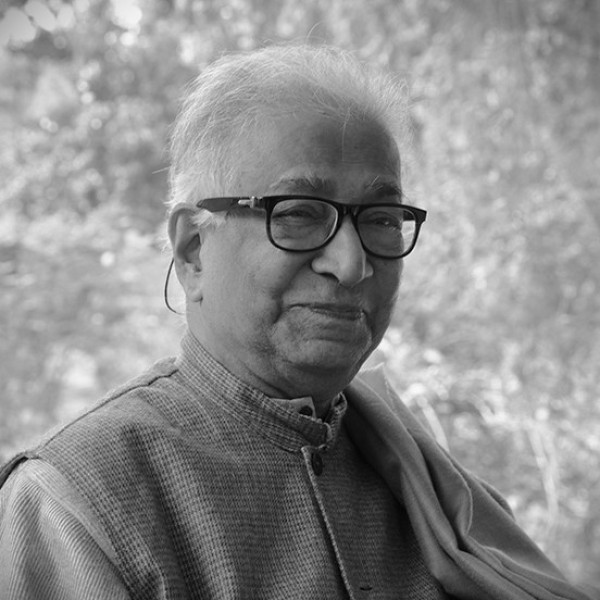K.G. Subramanyan
ABOUT
"The great tradition is not a museum, but a river that we swim in and continuously reshape."
Painter | Sculptor | India
Born in 1924
Died in 2016

K. G. Subramanyan stands as a foundational polymath in the trajectory of Modern Indian Art, distinguished not only by his exceptional skill but by his deeply intellectual approach to practice. Trained at Santiniketan under pioneering masters, he championed the idea of the Indian aesthetic as a "living tradition," one that artists must actively engage with and reshape, rather than merely replicate. Subramanyan forged a highly syncretic visual language, moving fluidly across the perceived boundaries between fine art and folk art. His vibrant compositions are masterfully layered, blending the narrative richness of Puranic myths, the simplicity of folk toys and Kalighat paintings, and the formal sophistication of modernist movements like Cubism. He infused his allegorical narratives with sharp social and political satire, often depicting universal dramas through the guise of local fables and characters, such as the witty and observant Yantra woman. Beyond painting, he excelled as a muralist, printmaker, and sculptor, notably utilizing the challenging technique of reverse painting on glass or acrylic sheets to achieve a luminous, jewel-like quality in his work. Subramanyan’s impact was amplified by his role as a pivotal educator and writer, whose critical essays, including The Living Tradition, articulated the necessity of synthesizing indigenous craft and popular visual culture with a contemporary, global sensibility. His legacy is one of continuous exploration, proving that versatility is the essential tool for depicting the full spectrum of the human experience.

